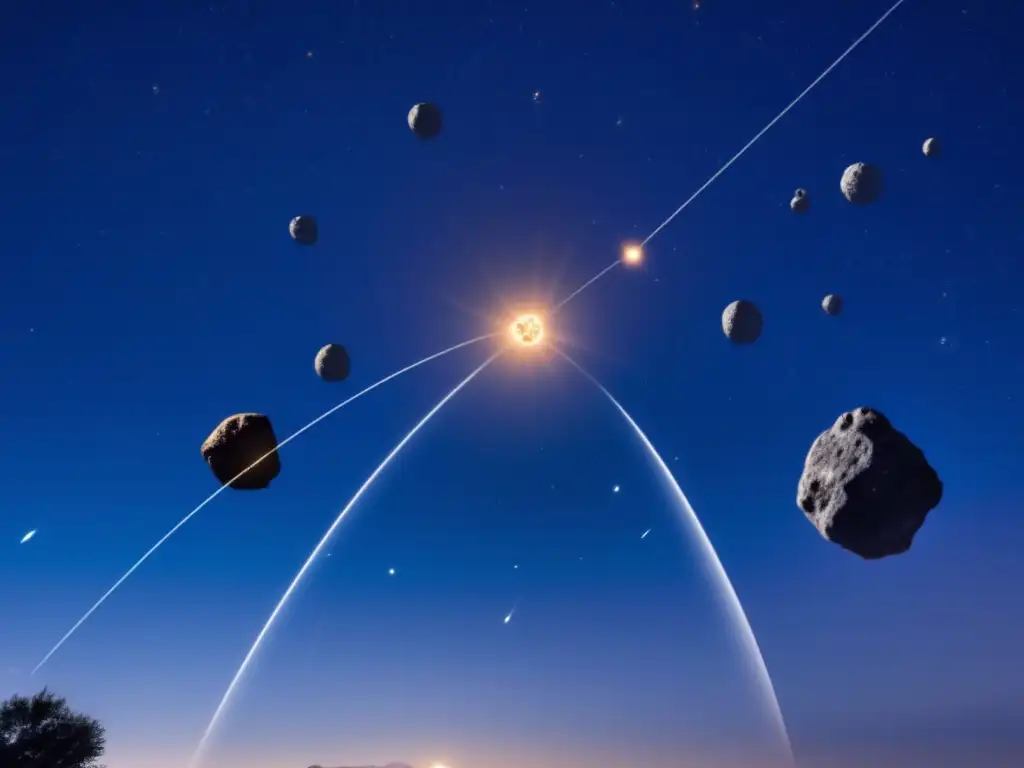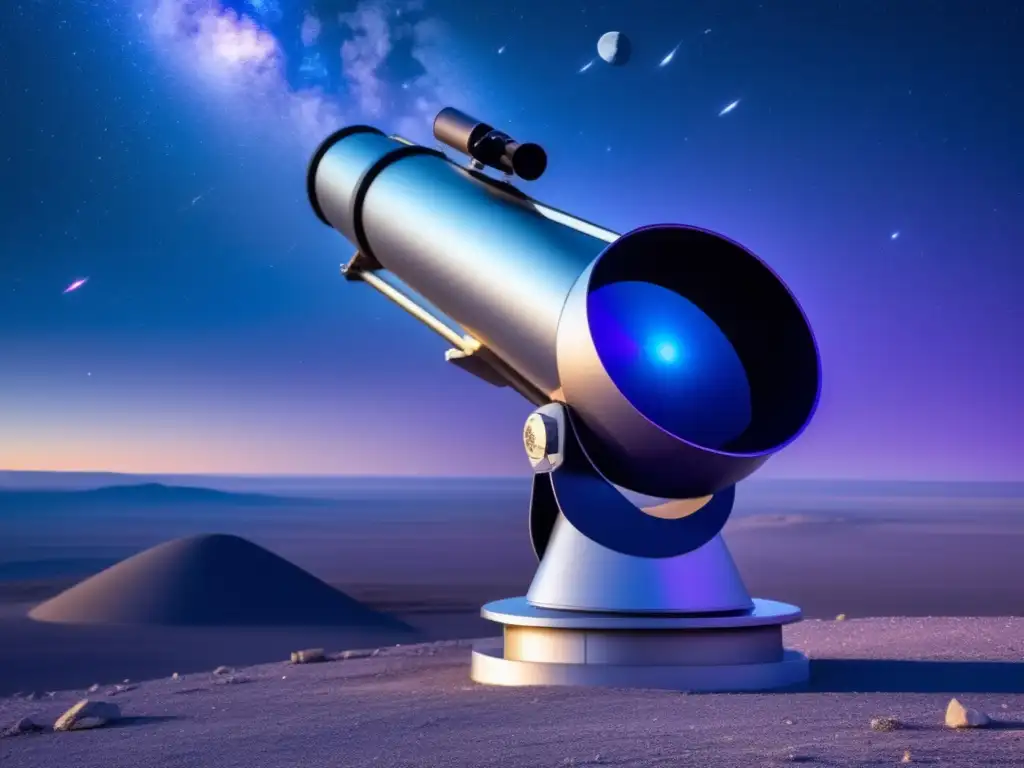Understanding The Movement Of Asteroids In The Night Sky

Introduction
Asteroids have fascinated astronomers and enthusiasts alike for centuries. These celestial objects, often referred to as minor planets, orbit the Sun and can be found throughout our solar system. Understanding how asteroids move in the night sky is essential for observation and studying their characteristics. In this article, we will explore the intricacies of asteroid movement, including their orbits, positions, and visibility.
Orbital Mechanics

Kepler's Laws of Planetary Motion
In the late 16th century, the German astronomer Johannes Kepler formulated three laws that describe the motion of planets and other celestial bodies, including asteroids. Kepler's first law, the Law of Ellipses, states that the orbit of an asteroid around the Sun is an ellipse, with the Sun at one of the two foci. This means that asteroids do not follow perfect circular paths but rather elliptical ones.
Orbital Elements
To fully describe the orbital path of an asteroid, scientists use a set of six parameters known as orbital elements. These elements include the asteroid's semi-major axis, eccentricity, inclination, longitude of the ascending node, argument of perihelion, and time of perihelion passage. Combined, these elements define the size, shape, and orientation of the asteroid's orbit.
Aphelion and Perihelion
An important aspect of asteroid motion is the concept of aphelion and perihelion. Aphelion refers to the point in an asteroid's orbit where it is farthest from the Sun, while perihelion is the closest point to the Sun. The distances at aphelion and perihelion determine an asteroid's eccentricity, with highly elliptical orbits having greater differences between these points.
Asteroid Position and Visibility

Ephemeris Tables
Tracking the position of asteroids in the night sky requires accurate data on their coordinates. Astronomers use ephemeris tables, which provide the positions of celestial objects at specific times. These tables are generated through complex calculations and observations and allow observers to locate asteroids using telescopes or specialized software.
Sky Mapping Software
With the advancements in technology, sky mapping software has become a valuable tool for both amateur astronomers and professionals. These software programs can simulate the night sky and display the positions of asteroids in real-time. By inputting the orbital elements of a specific asteroid, observers can visualize its current location and plan observations accordingly.
Visibility Factors
Several factors influence the visibility of asteroids in the night sky. One crucial factor is the phase angle, which is the angle between the Sun, the observer, and the asteroid itself. At certain phase angles, asteroids may appear brighter or dimmer due to the way sunlight reflects off their surfaces. Additionally, factors such as distance, magnitude, and atmospheric conditions also affect an asteroid's visibility.
Common Observing Techniques

Visual Observations
Visual observations remain a popular method for amateur astronomers to track and study asteroids. By carefully observing the night sky and comparing their observations to star charts or ephemeris tables, observers can identify and track the movement of asteroids over time. Visual observations often require patience and attention to detail but can yield valuable data.
Photographic and CCD Imaging
Photographic and CCD (Charge-Coupled Device) imaging techniques allow for more precise measurements and image capture of asteroids. With the use of telescopes, cameras, and computer processing software, astronomers can obtain images and data that reveal finer details about an asteroid's surface, shape, and potential rotation. This technique is commonly used in professional observatories.
Radar Observations
Radar observations are another powerful tool to study asteroids. By transmitting radio waves towards an asteroid and measuring the reflected signals, scientists can determine its distance, size, and shape with exceptional accuracy. Radar observations have provided valuable insights into the composition and surface features of various asteroids.
Frequently Asked Questions

-
How do asteroids move in the night sky?
Asteroids move through their elliptical orbits around the Sun. Their positions change relative to the background stars, requiring accurate tracking and observation.
-
What factors affect the visibility of asteroids?
Visibility can be influenced by a variety of factors, including the phase angle, distance from Earth, magnitude, and atmospheric conditions.
-
What tools can I use to observe asteroids?
Visual observations, photographic and CCD imaging, and radar observations are common techniques used for observing asteroids.
-
How can I locate asteroids in the night sky?
Using ephemeris tables or sky mapping software, you can find the current positions of asteroids and locate them using telescopes or binoculars.
-
What additional resources are available for learning about asteroid observation?
For more in-depth information, you can explore books, scientific journals, and online resources dedicated to asteroids and observational astronomy.
Conclusion
Understanding the movement of asteroids in the night sky is crucial for astronomers and enthusiasts alike. By grasping the principles of orbital mechanics, utilizing tools like ephemeris tables and sky mapping software, and employing various observing techniques, we can delve deeper into the world of asteroids and uncover their secrets. Remember to share your thoughts and experiences in the comments section and engage with www.asteroidrealm.com to further enrich your understanding of these fascinating celestial objects. Thank you for your time and happy stargazing!
Additional Resources

For more information on asteroid observation and related topics, you can explore the following resources:
- NASA's Near Earth Object Program: https://www.nasa.gov/planetarydefense/neos
- Minor Planet Center: https://www.minorplanetcenter.net/
- International Astronomical Union: https://www.iau.org/
- Astronomy Magazine: https://www.astronomy.com/
 DIY Guide To Building An Asteroid-Observing Telescope
DIY Guide To Building An Asteroid-Observing Telescope A Step-by-Step Guide To Observing Your First Asteroid
A Step-by-Step Guide To Observing Your First Asteroid The Role Of Computer Programs In Asteroid Tracking
The Role Of Computer Programs In Asteroid TrackingIf you want to discover more articles similar to Understanding The Movement Of Asteroids In The Night Sky, you can visit the Telescopes and Asteroid Observation category.
Leave a Reply

Articulos relacionados: